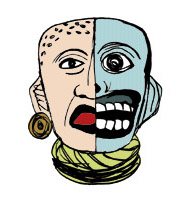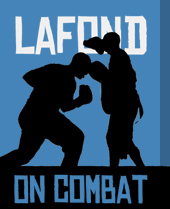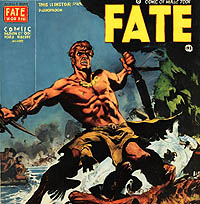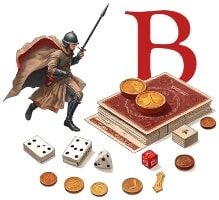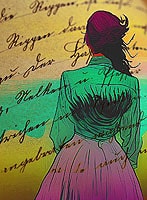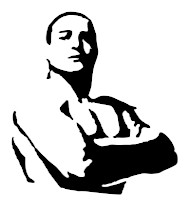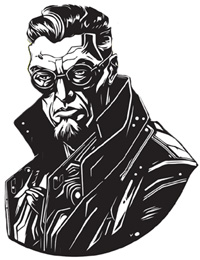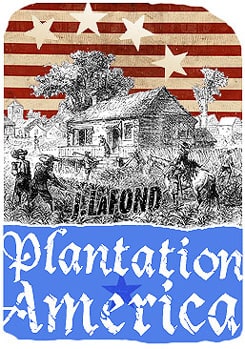“So that wide field so his way he should find
or which lame faith leaves understanding blind,
lest he perplex the things he should explain
what is easy he should render plain.”
-Andrew Marvel, 1668, on John Milton’s Paradise Lost
…
Remote Viewing Note
From the vantage of The Pewter Eye in the forehead of Seeker Quartermaine, with angles of accent refracted from the Drake’s Eye in the still hand of Seeker Cane. The combined view is fractured, with a myopic pewter focus, surrounded by cracks in the astral mirror. Beyond these fractures, unique and mostly odd images gathered by the Drake’s searching eye do dare compel.
…
In a garage lit by the light of a silver lantern worked in the image of a skull:
...Upon the charred hood of a car, a disembodied hand, gloved in red velvet, works its long, delicate, female fingers before the orchestra she does conduct. The hand’s legs are those of a starfish, that grip the metal surface as she conducts the concert.
...The orchestra pit is formed by the body of an impressive green serpent with golden eyes. Within the circuit of this coil all the players perform. The conductor, however stands beyond the serpentine coil, facing the windshield. The serpent’s head, striped in black, rises with its diamond back to the window. The snake’s tail forms a rattle presented within the pit. This instrument is favored by the conductor for the keeping of time.
...A great black cricket presented its wings and saws upon the violin string that is the tail of a well-preened white rat, the rodent squeaks it emits in response a fine mimicry of fiddle play.
...A dungeoness crab, wearing a tiny brass morion, clacks its claws and drums upon the scorched metal hood.
...A blue crab crawls high behind the dungeoness crab and drums upon its back and brassy helmet with its lesser limbs.
...A tiny raccoon, wearing a grass skirt, and black wooden mask, holds an embalmed seagull head worked into a horn, which it blows upon to repeat the songs flown up from the sea.
...Three hermit crabs dance before the singer, scandalously nude, their shells abandoned at the sultry singer’s feet.
...A beautiful black woman, a mere foot and a half tall, with a head as large as a man’s hand, her eyes as large as any set in a full-sized woman’s face, set upon a long lithe neck, sings. Her ear lobes and kinky hair hang to her dainty shoulders past that lithesome neck upon which the relatively great head bobs like a cork. Her tiny breasts are hung with black pearls, her brown waist encircled by a golden hoop, once a large woman’s earring. Her hips, as wide as her big head, draped in white pearls, sway as she sings. The song she sang was of sand, sirens, gulls, and of wind, of wave, of flapping canvas and whipping rope.
A cute, chubby woman with beaded earrings and long feathery hair, wearing a coat embroidered with a dream catcher, assists the ship’s surgeon with the patient upon the cold, concrete floor.
There worked Doctor Quartermaine upon his artistic extension, his one time foe, become a grim companion, his hunter become a fellow seeker, an accretion of mechanistic pretension upon atavistic assumption.
The flesh and silver head of Captain Cain was held in a vice, his silver hair hanging there, the toy sea chest embedded in his head, open to the pliers of the surgeon.
Stripped naked, the once human body was exposed to the surgeon, by his assistant, Dove from Winter, who repaired the torn clothes in the radiant light, using the open hood of a car as a loom, with needle and thread from the cavernous sea bag to mend the vestments of her metaphysical yet mechanical protector.
The eyes were rolled back in Cain’s head, silver as the moon.
His hands, the best part of him, powerful vices in their own right that could do great harm to the surgical team, are chained to invisible floor rings, the fetters made from the wool of Doctor Quartermaine’s own mane. Each finger moves and twitches as the doctor probes the wires in the hatch upon the head.
The chest was paper white, of ram skin vellum, stretched over the upper half of an old brazen cuirass, stitched together where it had been rent, with sail cloth.
The stomach was made of an ivory washboard, hinged with brass clasps.
The shoulders where wonderful round, iron joints, crafted of hollow cannon balls of the type filled with explosives and launched out of siege mortars from bomb catches.
The hips were worked from a brass ship’s bell.
The arms were made of steel rods, automobile springs, clothed in hoodoo animate flesh, attached with “India rubber” or bicycle tires.
Within the chest, the Doctor assured, “beat a heart of iron.” The ribs were originally made of whalebone, replaced in unhappy stages, for the most part, with carved wooden replacements that snapped too easily.
Within the washboard belly, the Doctor assured, “sagged a wine skin stomach,” a “powder flask spleen,” a “hammerhead shark’s liver,” and “jellyfish for kidneys.”
The doctor assured that the soul of Captain Longshank Cain resided in the preserved spine of the actual man of olden time and that this spine was reinforced by “India rubber” and other means and was nearing the end of its sustainable life. The doctor expressed a real fear that his patient was undergoing his final restorative surgery.
Mamma Mia, the “Fresh Got New Shrunk Bride” of Juju Quartermaine, was required to sing to the soul housed snake like and coiled within the mighty spine that backed the scrap-maintained frame of Cain.
The band upon the car hood played, the surgeon below plied his wondrous trade, and his assistant tended the patient’s vestments, which she was assured sustained the spirit in the spine as a kind of buffer against the profane and accursed world. Over all, Mamma Mia’s song, composed by Quartermaine, would Cain’s soul sustain.
The Song of Longshank Cain: Chorus [Mia Whisper Singing]
“Come to find what Oceanus drank
Summoned to bind who Time sank—
Olden hand o’ might,
Bold One, brand o’ night!
Don’t go Captain Cain,
Don’t maroon you Juju Crew
True to You be Mister Quartermaine.”
Between her hissing chorus the singer would belt out accounts of the patient’s heroic deeds, such as:
“The ghost that broke Limber Shoop,”
or
“The man who found Belinda Tennison.”
There were also general declarations of worth and character: to include:
“The Long Hand of God’s Law,”
and
“Right’s Tiller Hand.”
Repeated as often as the chorus in this hours long accompaniment to the restoration of Cain, most importantly his famously long shank of springy legs, was a repetition of a mission:
“The Hand that will save Little Oakland A.”
When this line was sung, sung more richly than the boasts of past deeds, the silver eye backs would shudder in their sockets and the big voodoo fettered hands flexed.
…
Notes
-1. In the event that Seeker Quartermaine must again in such a ritual way repair and sustain Seeker Cain, it is recommended that remote viewers refrain from observation. Note that Viewers Bill Ward, Boise, Idaho, Frequent Matter of Boulder, Colorado, and Graham Hancock, address unconfirmed, appear to have lost their desire to view remotely and have since begun wandering physical space in addled imitation of Seeker Cain. Recover efforts are currently under way.
-Prole Hudson, Majority Theoros, Buffalo, New York


